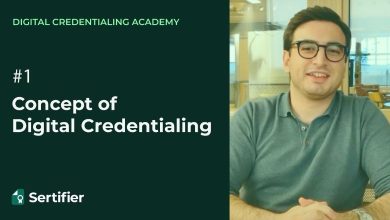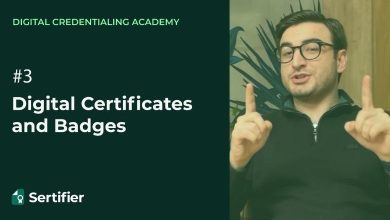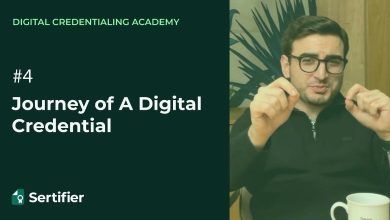Lineage of Digital Credentialing – Episode #5
Contents
Hello again, fellow seekers of digital credentialing! Today, we embark on an extraordinary journey back in time to trace the lineage of digital credentialing. Fasten your seat belts because we’re about to dive deep into the fascinating history. Let’s rewind to the late 90s, where the seeds of digital credentialing were sown and its potential began to be realized.
The Birth and Popularization of Digital Credentialing
In the late 90s, traditional paper certificates still dominated the landscape of recognizing achievements. However, a few visionary individuals recognized the untapped potential of utilizing the internet for housing and validating educational accomplishments. This marked the birth of digital credentialing, a groundbreaking concept that would revolutionize the way we recognize and showcase achievements.
During the early 2000s, forward-thinking organizations started experimenting with digital credentialing. These pioneers sought to create novel symbols that could effectively recognize informal learning experiences. While their efforts were initially modest, they set the stage for the future transformation of digital credentialing into a powerful force.
The Introduction of Open Badges: A Paradigm Shift
In 2011, a significant milestone occurred with the introduction of open badges, a standardized approach to digital credentialing. Mozilla took the lead in establishing this innovative concept, aiming to set a standard for digital badges. Open badges empowered learners to proudly display their achievements online, anytime and anywhere.
The adoption of open badges by prestigious institutions like MIT and global education leader Pearson further catapulted the acceptance and recognition of digital credentialing. These institutions recognized the potential of digital credentialing to enhance the credibility and accessibility of educational achievements. Additionally, the IMS Global Learning Consortium played a pivotal role in advancing digital credentialing by establishing essential standards for badges and e-transcripts.
The Broad Acceptance and Future Possibilities of Digital Credentialing
From its humble beginnings to the present day, digital credentialing has experienced exponential growth and acceptance. The market for digital credentialing is currently valued at a staggering 1.4 billion dollars in the United States alone. Worldwide, more than 20 million additional badges are issued each year, underscoring the widespread embrace of this transformative approach to recognizing achievements.
As we look to the future, the possibilities for digital credentialing are truly exciting. The advancements in technology, coupled with the growing acceptance and demand for e-credentials, open up new avenues for recognition and professional development. Digital credentialing has the potential to reshape the way we evaluate and showcase skills, knowledge, and accomplishments.
In the realm of education, digital credentialing allows learners to create comprehensive portfolios that highlight their diverse range of skills and experiences. This multifaceted representation of achievements provides a more holistic view of an individual’s capabilities, transcending the limitations of traditional paper-based certificates.
Furthermore, digital credentialing has far-reaching implications for professional development. It enables professionals to showcase their continuous learning and upskilling endeavors in real-time, increasing their marketability and opening doors to new career opportunities. Employers, too, can benefit from digital credentialing by efficiently evaluating candidates based on verified and standardized open badges.
In conclusion, the evolution of digital credentialing is a testament to its transformative power in recognizing and showcasing achievements. From its early beginnings to the broad acceptance we witness today, digital credentialing has disrupted traditional methods of recognition and brought about an era of accessibility, credibility, and limitless possibilities. The future holds even greater promise for digital credentialing, as it continues to shape the landscape of education and professional development.



